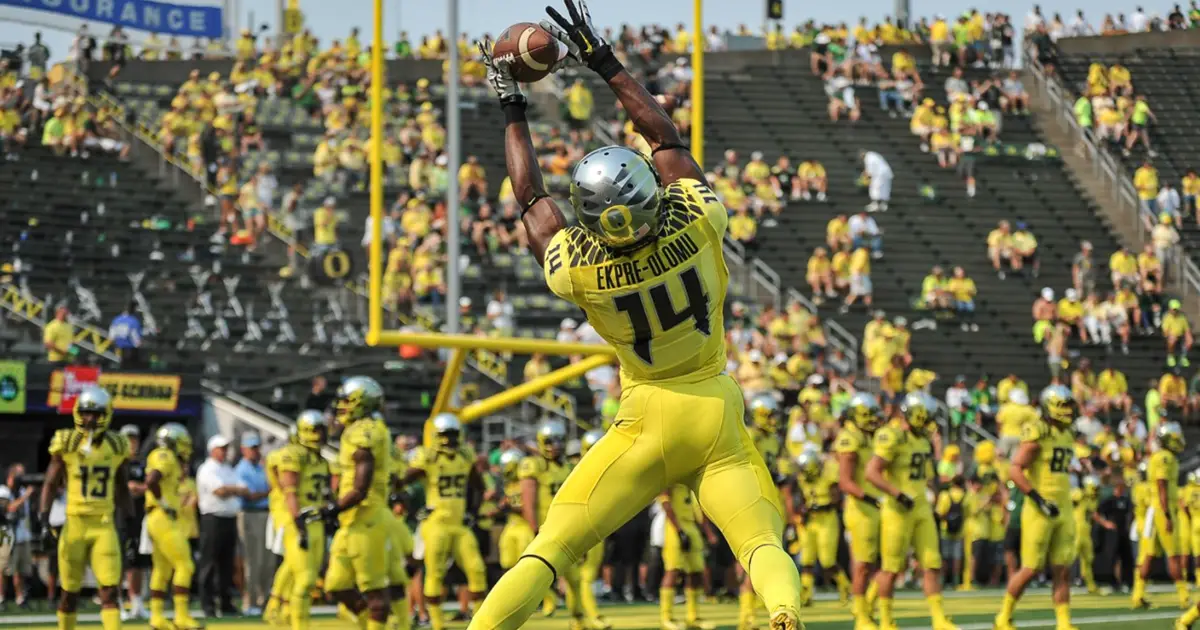Turnover differential is one of the most important stats in all of football, and perhaps no team in all of college football exemplifies that more than the Oregon Ducks. For a long time now, the Oregon Ducks’ turnover margin has determined the team’s fate.
Oregon has generally been one of the best programs in college football since the start of the 2010s. The Ducks have their fair share of excitement, with high flying offenses so good we still fondly remember them, and a defense that might be the best in school history. But aside from those moments of greatness, the Ducks have also had a whole slew of special teams blunders, seasons ruined by baffling losses with playoff implications, and quite a few coaching changes. At the end of the day, the only stat that has effectively predicted the win-loss record is turnover differential.
Chip Kelly / Mark Helfrich Era
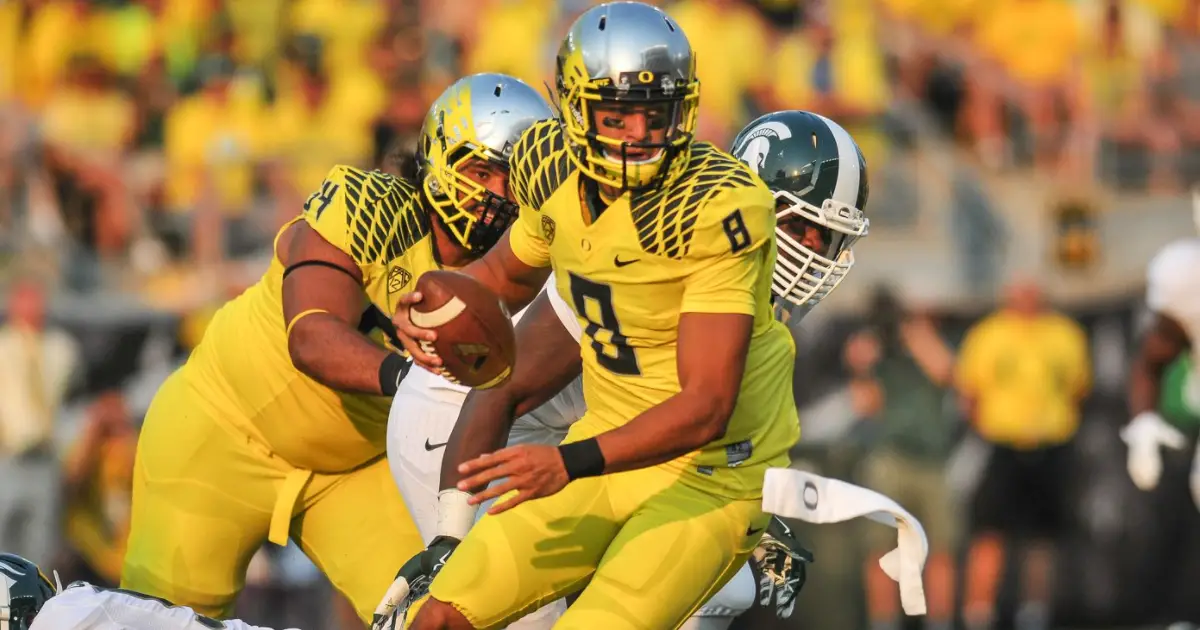
Marcus Mariota rarely turned the ball over at Oregon.
The Chip Kelly offense produced remarkably few turnovers. Their focus on ball security with the runners resulted in Oregon rarely (if ever) fumbling the football. The offensive focus on retaining possession resulted in few interceptions, meaning that the turnover rate was negligible. The lack of turnovers by the offense created more scoring opportunities, and with these opportunities, the offense scored more than 40 points per game for the entirety of the Kelly era.
The high rate of scoring under Kelly was, in itself, a form of defense. By scoring 40+ points per game, the offense forced opposing teams to make more and more desperate plays as the game went on. Throwing the ball late, deep, and down the middle made quite a few Oregon safeties look like ballhawks.
The Kelly defenses didn’t necessarily force fumbles less often on running plays than any other team, but nearly every team they faced turned in to an air raid offense in the second half of every game. This resulted in fewer total fumbles forced, but this may have been an anomaly due to the offenses they faced.
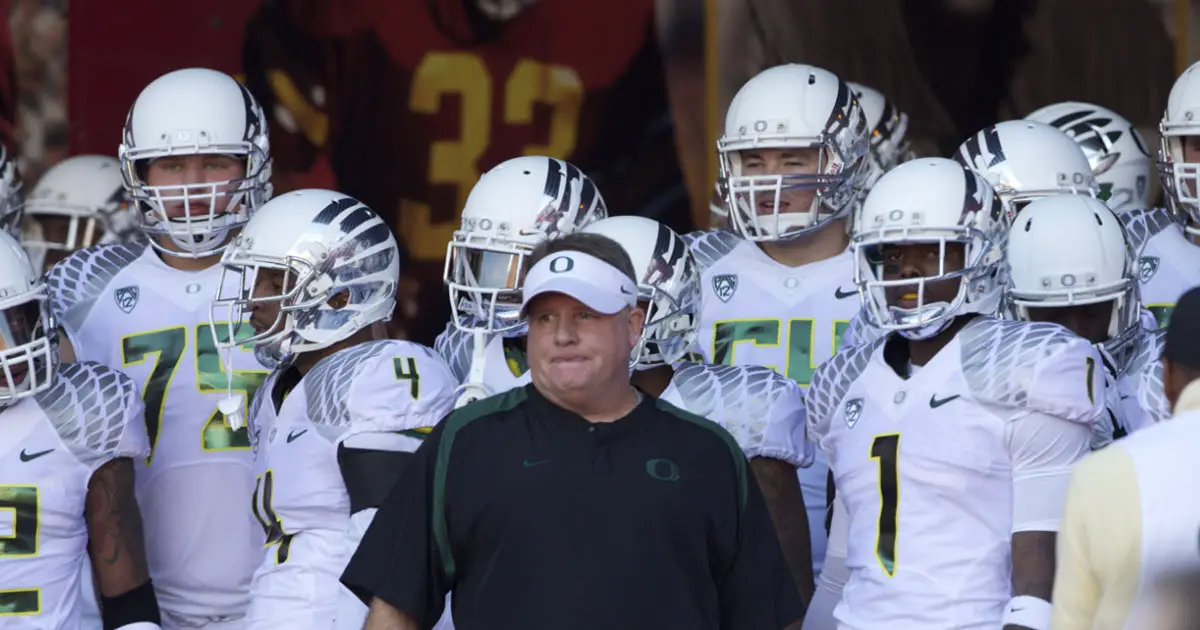
Boy, how much would hot-seat UCLA coach Chip Kelly love to return to his days at Oregon?
The Mark Helfrich era was much the same as the Kelly era. The offense didn’t turn the ball over much, and the defense benefitted from offenses going deep to try to make comebacks.
The difference between the two coaches is that Helfrich fielded progressively worse and worse defenses, meaning that the defensive backs who made plays on the Kelly defenses were not in Helfrich’s program. This meant that when the offense had a year (2016) with significantly more turnovers, their defense couldn’t pick up the slack, forcing the team to crash and burn.
The records for the teams led by both coaches and their national turnover differential rank are as follows: 2010: 12-1, 12th in differential. 2011: 12-2, 17th in differential. 2012: 12-1, 1st in differential (Helfrich takes over as head coach). 2013: 11-2, 19th in differential. 2014: 13-2, 1st in differential. 2015: 9-4, 37th in differential. 2016: 4-8, 81st.
Overall the correlation is clear: a better differential means a better record.
Willie Taggart / Mario Cristobal Era
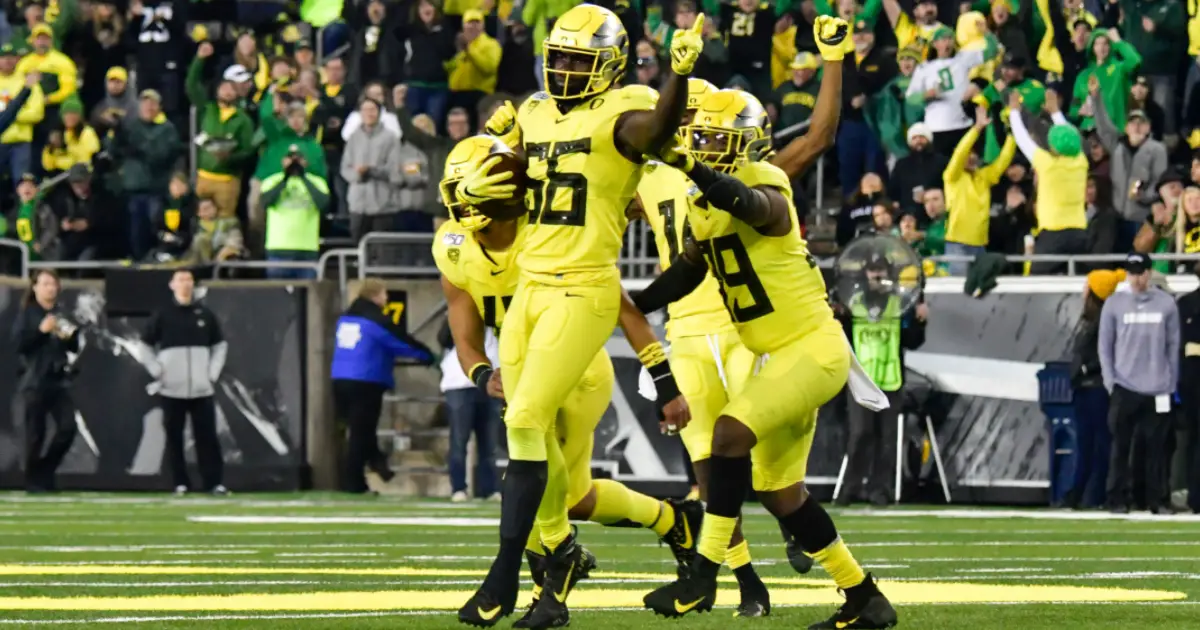
The 2019 Ducks knew how to take the ball away.
After the disastrous 4-8 season in 2016, Oregon fired Helfrich, opening the door to a new era. The coach Oregon selected to turn around the program was Willie Taggart, who evidently had a plan to change the offense that had scored so efficiently that other teams were forced to desperately throw the ball downfield.
Taggart was a bit unlucky in his one and only season in Eugene, losing star QB Justin Herbert to a broken collarbone after dominating the turnover category up until he got injured. After the injury, the team’s quarterback position became a liability, as new starters struggled to protect the football. Braxton Burmeister and Taylor Alie had seven combined interceptions to only two total passing touchdowns. The lack of a dynamic passing attack allowed defenses to key in on the run, resulting in little to no productivity on offense in nearly every game Herbert did not play.
Defensively, Taggart had a rebuilding defensive unit that did a decent job of forcing turnovers. The unit could no longer count on teams to make reckless offensive plays, as they were routinely held to fewer than 20 points during the 2017 season. This resulted in a defense that looked a lot worse on paper than how they actually played. The unit often started games strong, then spent so much time on the field that the opposing teams just piled on points in the second half.
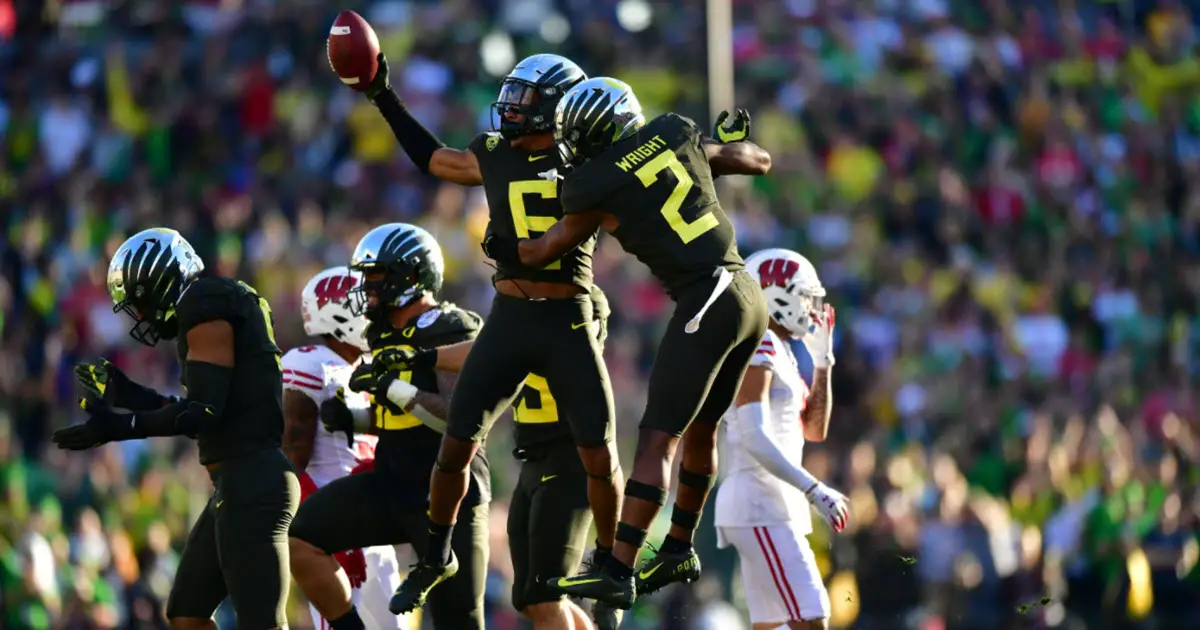
Deommodore Lenoir and the Ducks of recent years have become a more and more elite secondary under coach Cristobal
After Taggart departed from Eugene, the Ducks picked Mario Cristobal to stabilize the program. Cristobal didn’t have the same terrible luck that defined Taggart’s tenure, but his teams have also donned a completely different style of play.
Cristobal likes to control the ball on offense. Gone was the spread option, hurry up, so called “blur” offense that made the Kelly/Helfrich era memorable, and gone was the trick-play-filled, gulf coast offense that Taggart brought to town. Cristobal focused on controlling the line of scrimmage, and not scoring in a hurry. Running backs are no longer the focal point of the offense, resulting in more fumbles than ever before. The QB’s are taking fewer chances downfield, resulting in not quite as many interceptions.
Defensively is where Cristobal’s teams have shone brightly. He has, in three full seasons, fielded perhaps the three best statistical defenses since 2010. Kelly and Helfrich had several good defenses, but the offense kept them on the field so much that they had to give up points eventually. A present day Cristobal defense is focused on forcing turnovers and stopping the run. They don’t need the offense to play well to win games anymore because of their ability to force turnovers often, which results in more opportunities for points, pressuring opposing offenses to make more and more turnover-worthy plays.
The records for every team after the Helfrich-Kelly era and their national turnover differential rank are as follows: 2017: 7-6, 65th in differential (Cristobal takes over as head coach). 2018: 9-4, 26th in differential. 2019: 12-2, 5th in differential. 2020: 4-3, 121st in differential.
Conclusion
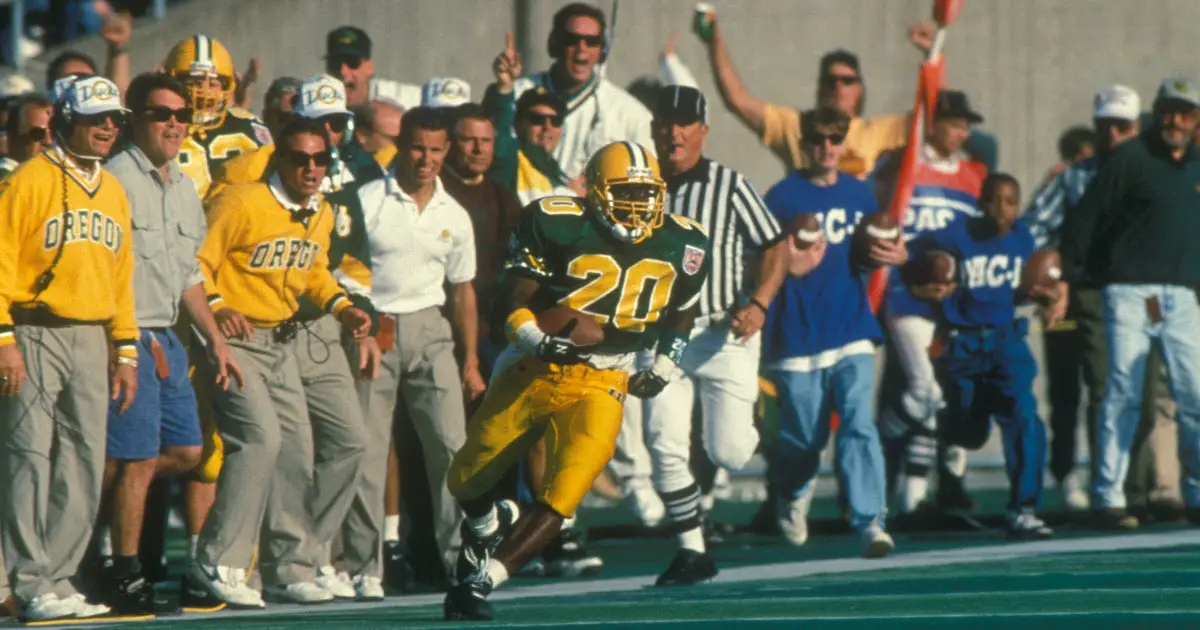
The modern Oregon Ducks are built off a single turnover.
Year after year, good differentials lead to winning teams, and worse differentials create losing tendencies. This does not necessarily persist across every team in the nation, but the Ducks certainly follow the rule. Overall, the trend is clear when the stats are laid out: if Oregon doesn’t rank in the top 30 teams in turnover differential, they won’t win many games.
Ryan Robertson
Yuma, Arizona
Top Photo By Kevin Cline
Related Articles:
Oregon Enters Playoffs Better Off Than Last Year
Will The Coaching Carousel Kill Oregon's CFP Chances?
The Playoff Formula Hasn't Changed
Oregon Aims to Bury Dawgs, Punch Playoff Ticket in Rivalry Clash
Huskies Are the New Beavers, Stay In Your Lane Kiffin, and the Civil Apple Cup War
Oregon Football: The X-Factor Vs. Washington
Ryan Robertson is a defense contractor for the United States Marine Corps. A lifelong Duck fan from Grants Pass, he joined the Army out of high school. After four years as an Intelligence Analyst he decided it was time to further his education and pay more attention to his Ducks. One of Ryan’s first memories is of watching the Ducks, led by Joey Harrington, beating up on the Utah Utes in 2001. His grandfather ran track at Oregon in the ‘50s. He loves the Ducks, and has a passionate interest in reading every scrap of analysis centered around the football team.

